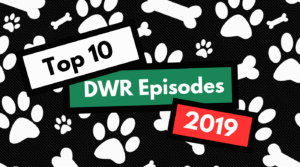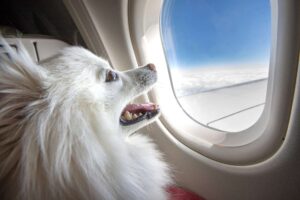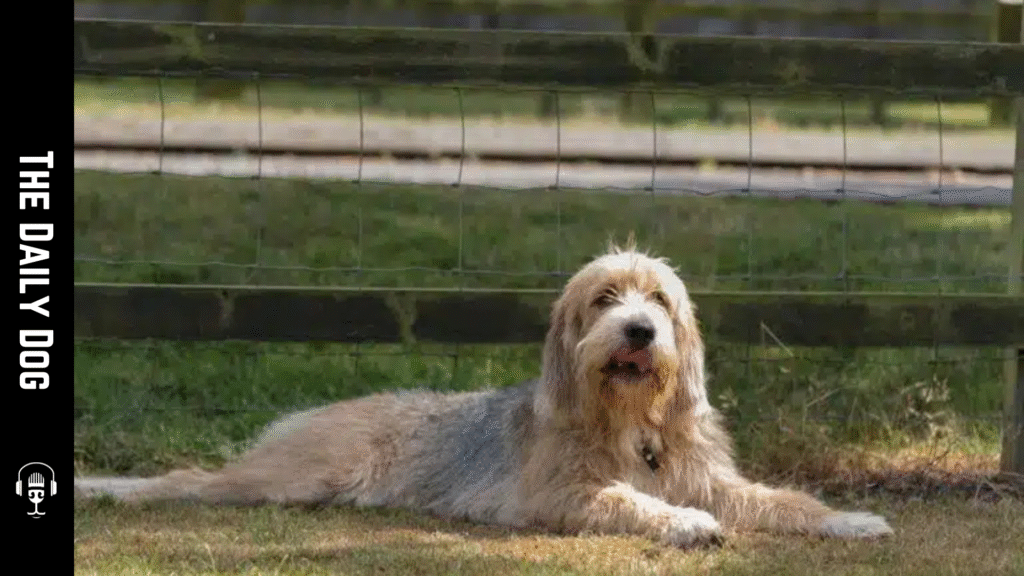The Otterhound is a storied and charismatic breed that blends rugged outdoor versatility with a heart full of companionship. Known for its distinctive rough, wiry coat and a keen, otter-hunting lineage, this breed has carved a unique place in the pantheon of classic hounds. Today, Otterhounds appeal to active families, water enthusiasts, and dog lovers who value a steadfast partner with a curious spirit, a wagging tail, and a voice that carries the echoes of centuries past.
Origin and history weave a compelling narrative around the Otterhound. Originating in England, the breed developed in the 18th and 19th centuries as a specialized hunter for otter and waterfowl. Its nimble paws, powerful nose, and buoyant gait allowed it to track semiaquatic prey through marshes and riverbanks. For generations, Otterhounds worked alongside hunters, sharing loyalty and stamina while navigating wet terrain, cold water, and long days afield. Though the sport of otter hunting waned, the breed endured with its distinctive sound and dignified presence, earning a nostalgic reverence among canine enthusiasts and conservation-minded collectors of historical dog breeds.
One of the Otterhound’s most striking features is its rugged exterior, an unmistakable wiry coat that protects against damp conditions and rough terrain. The coat requires regular grooming to prevent matting, but its tactile, weather-beaten appearance is a badge of its adventurous lineage. Beneath the outer coat lies a solid, well-boned frame built for endurance. Otterhounds are large, sturdy dogs with a noble head, expressive eyes, and a gait that can switch from a measured, dignified stride to a determined, high-energy sprint when the moment calls.
Character and temperament sit at the heart of what makes Otterhounds enduring companions. They are renowned for their keen scenting abilities and a bold, tactical mindset that served them well in the field. In a home setting, Otterhounds display affectionate, even-tempered personalities that thrive on companionship, routine, and meaningful activity. They are famously vocal, capable of baying with a resonant chorus that reflects their ancient hunting heritage. This vocal nature isn’t just a humane alarm system; it’s an expression of curiosity and a desire to engage with their people. For families and individuals who appreciate expressive communication in their dogs, the Otterhound offers a charming, if sometimes insistent, voice.
Intelligence and problem-solving come together with a strong work ethic in this breed. Otterhounds are independent thinkers who respond well to patient, consistent training that respects their autonomy while channeling their drive into constructive activities. Training should begin early to establish boundaries and ensure the dog understands household expectations. Positive reinforcement, combined with stimulating scent-based games and water-based exercises, can be especially effective. Because of their strong prey drive and investigative nature, secure fencing and supervision around smaller pets or wildlife can prevent undesired pursuits. A well-structured routine, daily walks, swimming, and interactive play, helps maintain fitness and keep their minds engaged.
Health considerations for Otterhounds reflect their longevity and hardy temperament, though, like many large breeds, they come with specific needs. Common issues include hip dysplasia, elbow dysplasia, and certain eye conditions. Regular veterinary checkups, a well-balanced diet, and an appropriate level of exercise are essential to support joint health and overall well-being. Otterhounds have a tendency toward obesity if activity levels dip or if feeding is not closely monitored, so owners should prioritize an active lifestyle and portion control. The breed’s robust constitution is complemented by a social nature; they tend to bond deeply with their families and thrive in homes where they receive consistent affection, guidance, and mental engagement.
Care routines for Otterhounds reflect their outdoor roots and social personality. Grooming involves more than a casual brush; the wiry coat requires hand-stripping or professional grooming to maintain its texture and protect against matting. Regular brushing helps remove loose hair and minimics shedding around living spaces. Bathing is needed only as necessary, given that frequent immersion can strip essential oils and skin moisture. Ear care, dental hygiene, and nail trimming are routine responsibilities that contribute to long-term health and comfort. Because Otterhounds are strong swimmers and enjoy water, owners should monitor swimming sessions to prevent overexertion and ensure safe, supervised play near bodies of water. Mental enrichment, through scent games, puzzle toys, and training drills, prevents boredom and anchors a sense of purpose.
When it comes to living considerations, Otterhounds flourish in environments that match their energetic yet affectionate nature. They are not ideal as solitary apartment dogs due to their size and need for regular outdoor activity. A home with a secure yard and access to varied terrain, woods, fields, and water, offers the best canvas for physical exertion and exploration. Families with older children often find a good fit, provided the children understand the dog’s boundaries and respect its space during rest periods. For active singles or couples, the Otterhound can be a loyal, low-key roommate who doubles as a vigilant watchdog and a trusted companion on hikes, runs, and weekend getaways. Socialization with other dogs and people during puppyhood paves the way for a balanced, well-mannered adult.
Otterhounds demand meaningful, consistent activity to maintain mood and physical health. Their natural stamina makes them excellent partners for long walks, trail runs, and water-based adventures. Regular swimming is particularly beneficial, aligning with their heritage and supporting joint health. A structured regimen that alternates between endurance-building activities and mentally stimulating tasks keeps the breed content and reduces the risk of behavioral issues born from boredom. Because Otterhounds are vocal and sometimes stubborn, training should be anchored in patience, reinforcement, and clear communication. Positive experiences cultivate trust, while sparseness or harsh approaches can erode confidence and strain the bond between dog and owner.
The Otterhound’s role in modern households is as multifaceted as its history. It can be a devoted family member, a capable working companion, or a spirited partner for outdoor enthusiasts who appreciate nature’s challenges. Whether patrolling a countryside property, joining family jogs along a river, or simply soaking up the sun on a calm afternoon, the Otterhound brings a distinctive blend of resilience and affection. Its presence exudes a sense of timeless companionship that resonates with people who value a dog that is both a friend and a partner in exploration.
Owners seeking to welcome an Otterhound into their lives should consider several practical steps. First, locate a reputable breeder or rescue organization that prioritizes health testing and breed knowledge. Given the breed’s relatively small population, ethical sourcing helps safeguard genetic diversity and welfare. Prospective owners should prepare for the dog’s size, energy, and vocal tendencies, ensuring they can provide consistent daily exercise, mental stimulation, and a comfortable living environment. Investing in high-quality dog gear for outdoor adventures, durable collars, weather-appropriate jackets, and secure harnesses, supports safety and comfort during excursions. Additionally, exploring local training clubs or water rescue-oriented groups can connect new owners with communities that share the Otterhound’s interests and needs.
For hobbyists and collectors who admire the Otterhound’s aura, the breed offers a tangible link to maritime history and rural England. The Otterhound’s presence in literature, film, and canine circles evokes a sense of nostalgia, a reminder of dogs that served practical roles while enriching human lives with loyalty and character. Its distinctive baying and expressive face carry a narrative that transcends trends, making the Otterhound a memorable ambassador for breeds that blend utility with companionship.
In contemporary dog culture, the Otterhound stands as a testament to durability and character. Its story invites owners to invest in training, care, and time, a promise of a robust partnership built on trust and mutual respect. The dog’s zest for exploration, coupled with a tender and affectionate disposition, creates a dynamic dynamic that resonates with those who seek a meaningful canine confidant. Whether navigating a countryside trek, sharing a lakeside afternoon, or simply enjoying a quiet moment indoors, the Otterhound remains a steadfast presence, always ready for the next adventure.
If you’re considering adding an Otterhound to your family, here are a few practical takeaways to guide your decision. A daily rhythm that includes physical activity, mental challenges, and socialization is essential. Prepare for a dog that can be vocal; plan for regular training sessions that reinforce good manners while honoring its independent streak. Ensure your living space accommodates a large dog with a preference for outdoor time, and invest in gear designed for water-loving breeds. Above all, approach the Otterhound with patience and celebration of its unique history, and you’ll build a relationship that honors a breed with a remarkable, enduring legacy.
The Otterhound is more than a dog, it is a living link to a bygone era of fieldwork, water, and companionship. Its distinctive appearance, formidable scenting prowess, and affectionate temperament coalesce into a breed that offers both challenge and reward. For families, active individuals, and dog enthusiasts who crave a partner with stamina, loyalty, and a touch of maritime mystique, the Otterhound stands ready to inspire, accompany, and endure. Embrace its history, meet its needs with consistency and care, and you’ll discover a bond that echoes the adventurous spirit that has defined this breed for generations.
We offer a FREE Strategy Call.
Click on the graphic to learn more
Read More

The Top 10 Dog Works Radio Episodes of 2019 You Shouldn’t Miss









